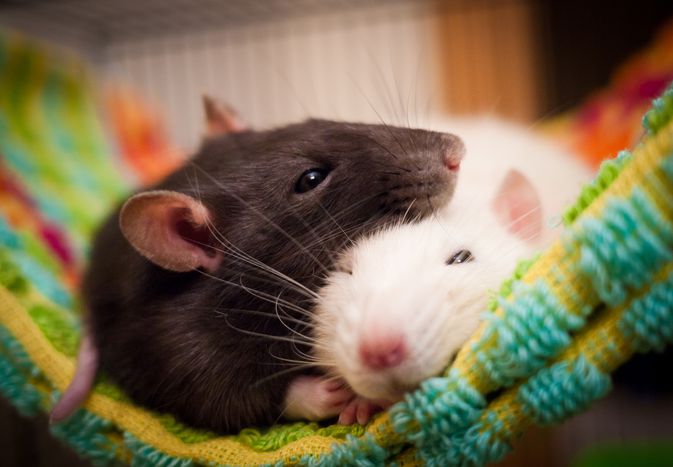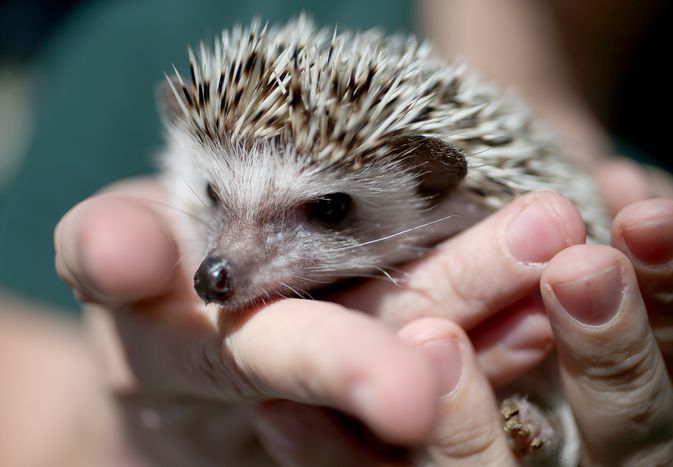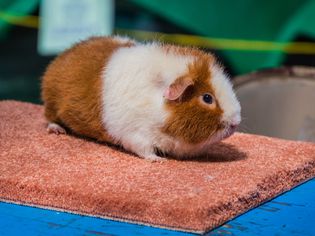How to Travel With a Rabbit in a Car
Your rabbit may be happier staying with a pet sitter at home rather than coming along for a road trip, but sometimes you have no choice but to travel with your rabbit. Because travel can be quite stressful for rabbits, there are a few things you should do to make the trip safe and a bit more enjoyable.
Get a Good Carrier
If your rabbit cage fits in your vehicle, your rabbit can travel this way, but most cages take up too much room and may allow your rabbit to hurt themselves if you have to stop or turn suddenly. Some people use small crates meant for dogs, but it can be awkward to get your rabbit in and out of a front-opening cage if they won't willingly hop in it. Instead, consider getting a travel carrier that opens on the top and sides. With this type, you can easily lift your rabbit in and out of the carrier. Additionally, the solid walls make it private for your rabbit to feel secure, rather than open to the elements like a dog crate would be.
Get Your Rabbit Used to Their Carrier
Allow your rabbit to get used to the carrier before the car ride by following a few steps.
- First, allow them to explore the carrier on their own. Place it on the floor during playtime and put a few favorite treats inside on top of a towel.
- After a while, gently put your rabbit in the carrier for a few minutes at a time with their favorite treat or toy.
- To get them adjusted to having to stay in the carrier, start out by placing your rabbit in their carrier on the blanket with the treats. Close the door securely and pick up the carrier making sure to keep it close to your body, not swinging by your side like a bucket.
- Walk around the house and hold the carrier on your lap for a few minutes.
- Eventually, work up to keeping your rabbit in the carrier for 30 minutes before letting them hop out on their own.
Cool the Car Before Traveling With Your Rabbit
Now that your rabbit is comfortable in its carrier, consider the temperature of the car before going on a real car ride. Rabbits do not tolerate temperatures over 75 degrees F. Therefore, you need to make sure they stay cool.
- Don't allow the carrier to sit in direct sunlight in the car to prevent overheating.
- Never leave your rabbit unattended in the vehicle on a warm day.
- Turn the air conditioning on, but don't allow the vents to blow directly onto your rabbit's carrier.
- On a really hot day (or if you do not have air conditioning), place a damp towel over the carrier along with an ice pack wrapped in a small towel inside the carrier for added cooling.
- If it's the other extreme and cold outside, make sure the heat vents are not blowing directly onto the carrier.
Practice Going on a Car Ride
Once your rabbit is used to their carrier and the car is a safe temperature, place the carrier on the floor of your car or buckled into a seat. Start out taking short trips around the block and work up to longer trips of 30 minutes to an hour to acclimate your rabbit to both the carrier and the sensation of a moving vehicle.
Plan Ahead for the Car Ride
Now that your rabbit is ready to travel, you must make sure you don't forget to pack for them.
- Pack extra food that your rabbit normally eats, a water bottle that can attach to the carrier, and some favorite treats.
- Get a health certificate from your vet if you are crossing state lines or attending a rabbit event, and consider getting your rabbit microchipped in case they get away from you.
- Pack some cleaning supplies like paper towels and a safe pet cleaner for any messes or spills. You can also place a blanket, trash bag, or cardboard piece over the seats in the car where the carrier will sit to protect from any stress-induced urine spraying or spills. Consider placing a puppy training pad on the bottom of the carrier for extra absorbency or if the carrier has room, a corner litter box.
- Place some pellets and hay in the carrier for your car ride and offer the water bottle regularly for a few minutes every hour if it isn't attached to the carrier. If your bunny prefers, you can give him water in a dish during stops.
- When you stop, offer your bunny their favorite treats as many rabbits don't eat much due to the stress of traveling.
- If your trip is longer than a single day, pack an exercise pen to use as temporary overnight housing.
- Only take your rabbit out of the carrier in enclosed spaces to prevent escapes. A stressed rabbit may dash away in a panic if they get out of their carrier outdoors.
RECOMMENDED NEWS

How to Care for a Pet Mouse
Pet mice are entertaining to watch and easy to care for, and they make very few demands on their ow...
Read More →
Identifying and Treating Common Ferret Diseases
Ferrets are extremely entertaining exotic pets but just like dogs and cats, they are prone to a var...
Read More →
A Guide to Keeping and Caring for Pet Rats
Rats have a reputation for being pests or vermin, but they are intelligent and social animals, and ...
Read More →
Mites in Hedgehogs
Mites are annoying and common parasites that bite and cause irritation to your hedgehog's skin,...
Read More →
How to Care for a Pet Teddy Guinea Pig
Guinea pigs are large rodents that don't have tails, and their fur can come in a variety of texture...
Read More →
What Do Guinea Pigs Eat? How to Give Them a Healthy Diet
At the most basic level, guinea pigs are herbivores. That means that they just eat fruits and veggi...
Read More →
Hamster Food 101: What Can Hamsters Eat?
Hamsters are cute, small, and relatively easy to care for, and if socialized and handled gently, th...
Read More →
Itching and Scratching in Rabbits
Rabbits shouldn't scratch themselves any more than you would. If your pet rabbit seems excessively ...
Read More →
Seizures in Rabbits
Like humans and other pets, rabbits can have seizures—periods of involuntary physical movement us...
Read More →
Comments on "How to Travel With a Rabbit in a Car" :